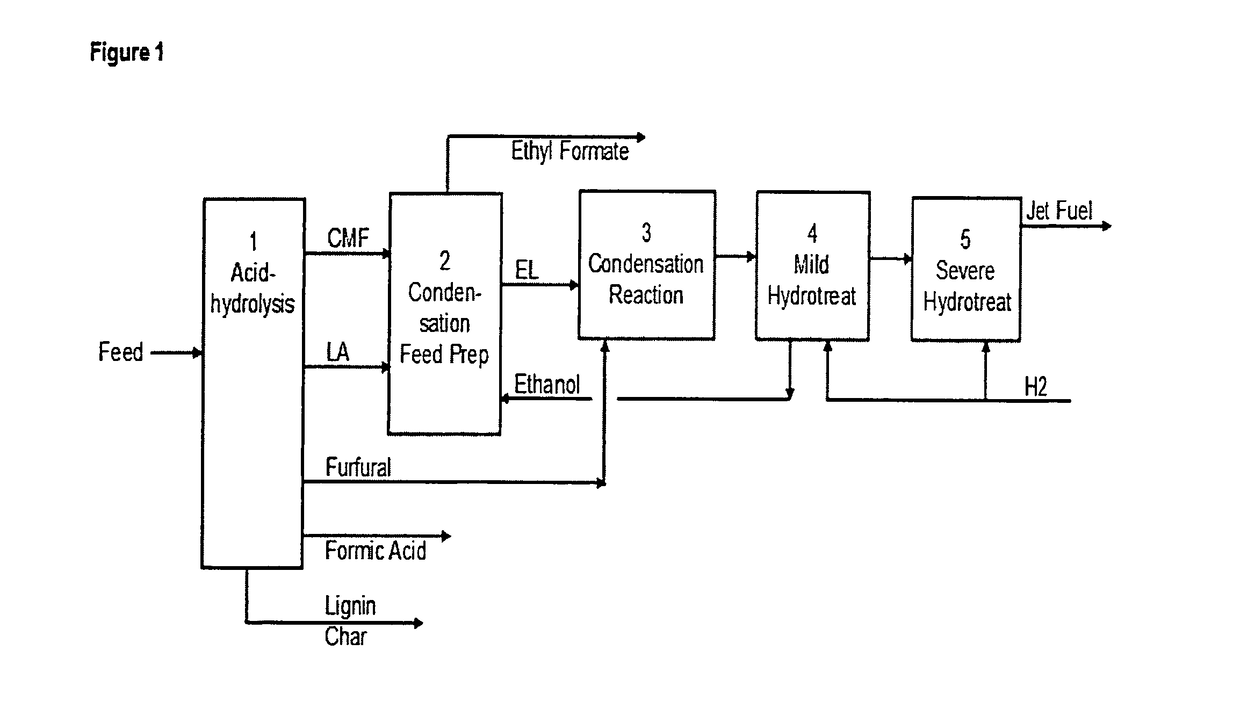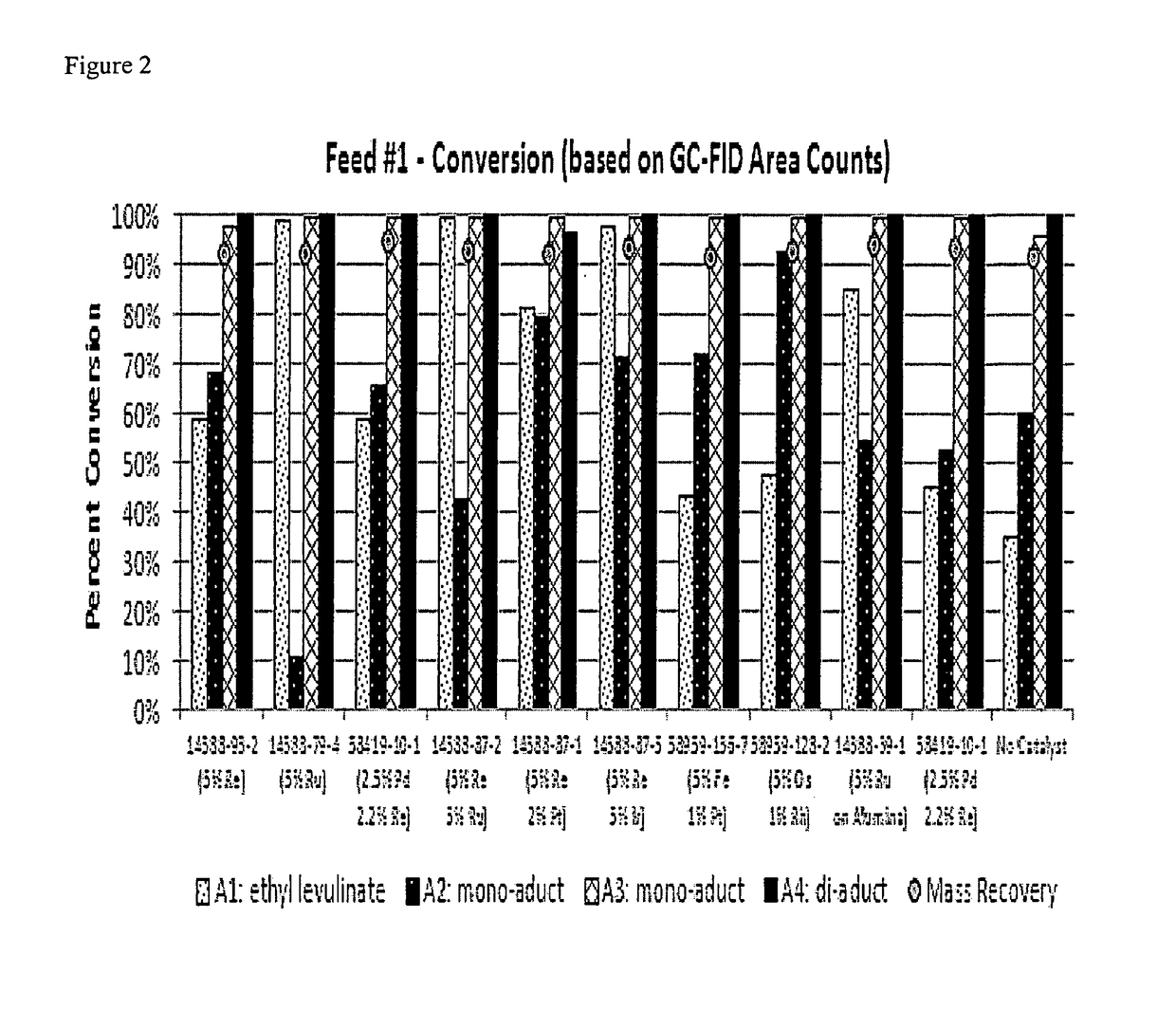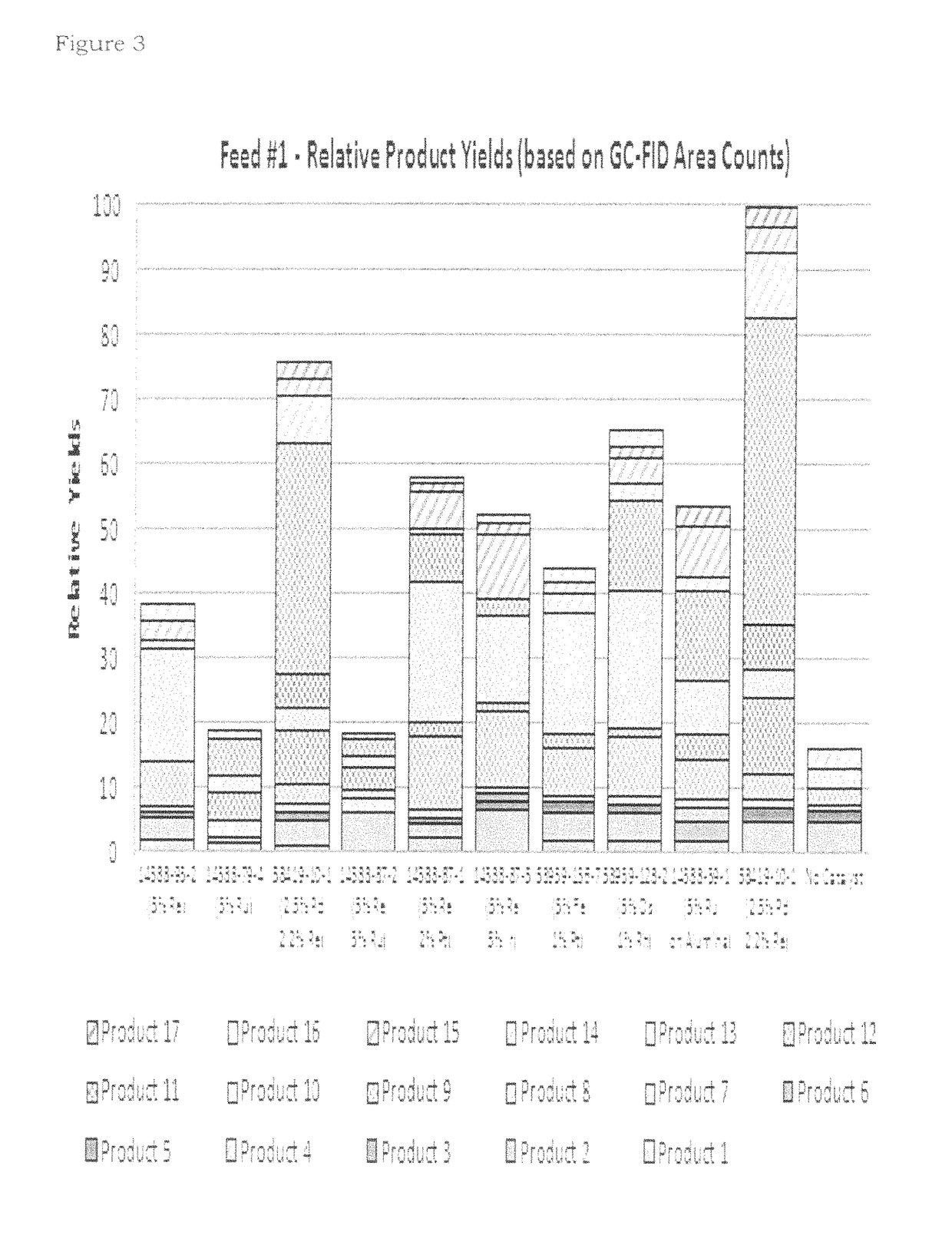Biorefinery for conversion of carbohydrates and lignocellulosics via primary hydrolysate CMF to liquid fuels
a biorefinery and lignocellulosic technology, applied in the direction of hydrocarbon from oxygen organic compounds, chemical instruments and processes, organic chemistry, etc., can solve the problems of carbon dioxide, high cost of enzymes and long contact time, and inability to meet the needs of complex structure, etc., to achieve the effect of reducing the propensity of product mixtures and enhancing fuel properties
- Summary
- Abstract
- Description
- Claims
- Application Information
AI Technical Summary
Benefits of technology
Problems solved by technology
Method used
Image
Examples
Embodiment Construction
[0023]FIG. 1 illustrates a biorefinery system in accordance with a preferred embodiment of the present invention.
[0024]As can be seen therein, feed, which is comprised of any suitable carbohydrate or lignocellulosic feedstock, is fed into 1, a hydrolysis unit, for conversion to intermediates such as CMF, furfural, and LA. Unit 2 is a Condensation Feed Prep unit that converts CMF and LA into HMF and EL in an advantageous ratio. The Condensation unit, 3, converts the products of the Feed Prep and furfural into a mixture of larger carbon chain molecules. Unit 4, a Mild Hydrotreat unit, saturates carbon double bonds and recovers alcohol (such as ethanol) for recycle. Severe Hydrotreating, unit 5, deoxygenates the mixture of Mild Hydrotreating products to produce a mixture of alkanes suitable for diesel and jet fuel blendstock.
[0025]As noted above with reference to FIG. 1, the first step in a biorefinery in accordance with the present invention is depolymerization of cell...
PUM
| Property | Measurement | Unit |
|---|---|---|
| temperatures | aaaaa | aaaaa |
| temperature | aaaaa | aaaaa |
| temperature | aaaaa | aaaaa |
Abstract
Description
Claims
Application Information
 Login to View More
Login to View More - R&D
- Intellectual Property
- Life Sciences
- Materials
- Tech Scout
- Unparalleled Data Quality
- Higher Quality Content
- 60% Fewer Hallucinations
Browse by: Latest US Patents, China's latest patents, Technical Efficacy Thesaurus, Application Domain, Technology Topic, Popular Technical Reports.
© 2025 PatSnap. All rights reserved.Legal|Privacy policy|Modern Slavery Act Transparency Statement|Sitemap|About US| Contact US: help@patsnap.com



